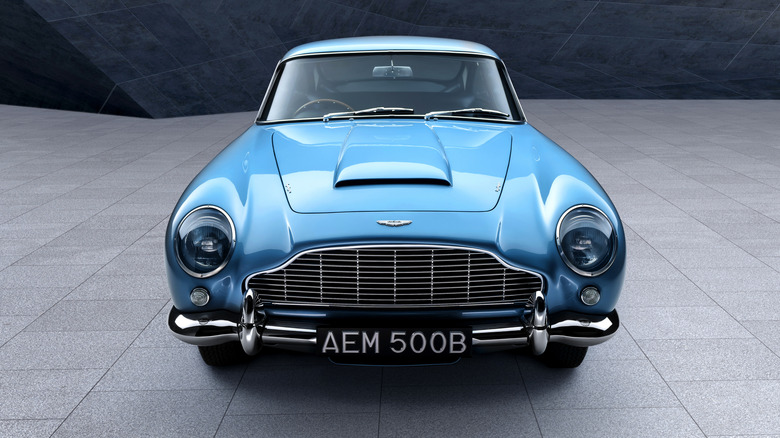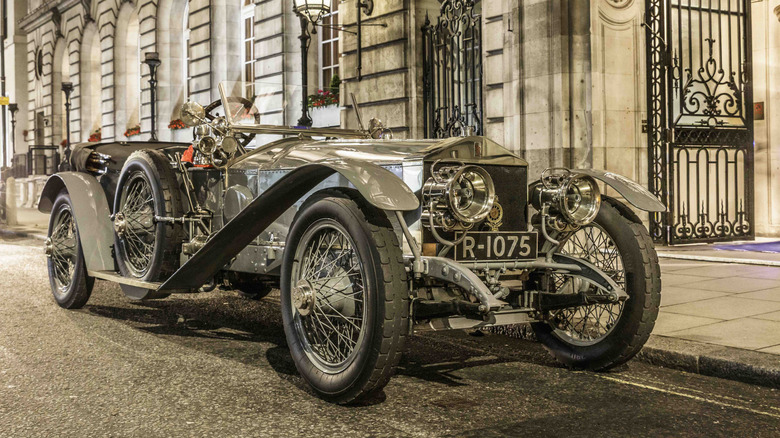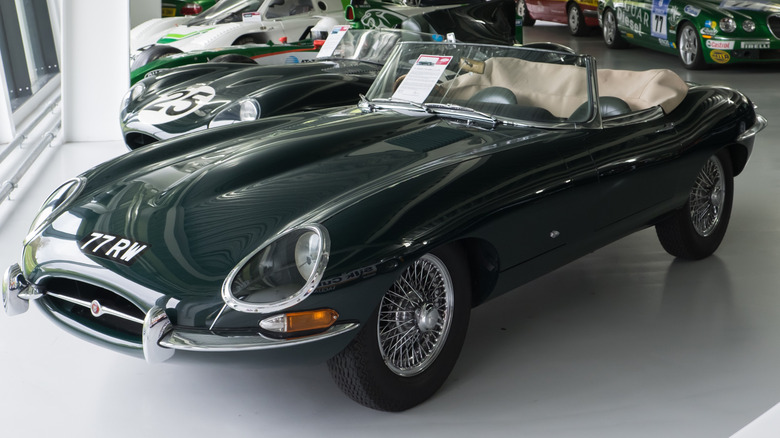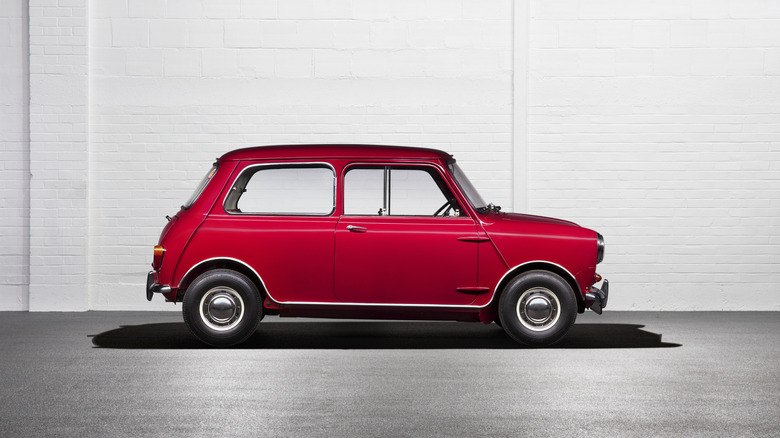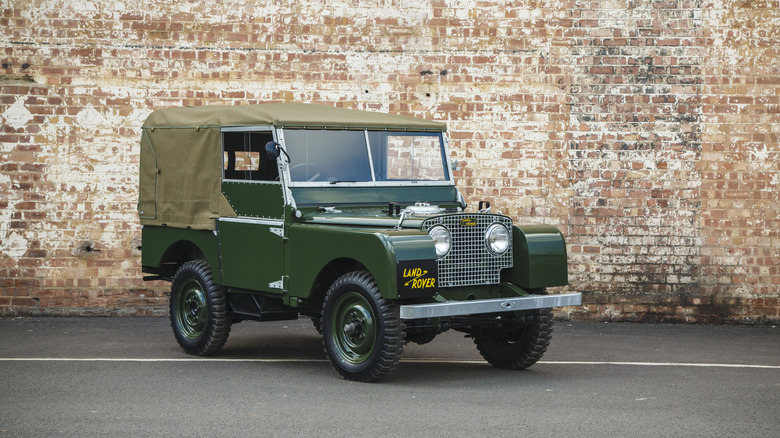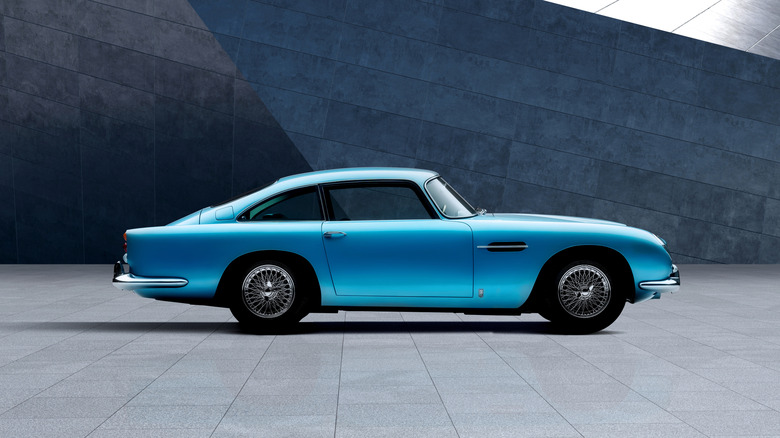5 English Cars That Changed The World
England may not have invented the automobile — the first car ever invented came from Germany — but the British quickly became famous for some of the world's most beautiful, luxurious, and high-performance cars. When asked to name a luxury vehicle or a stunning sports car, many people will mention brands like Rolls-Royce, Bentley, Land Rover, or Jaguar. The list of the greatest British sports cars of all time includes iconic names like Aston Martin, Lotus, and McLaren. British automobiles have a special reputation for stirring the soul as well as the senses.
What makes British cars so special? Part of it may be a heritage of luxury befitting an empire. After all, when a manufacturer builds cars for kings and queens, building them with opulence and elegance becomes second nature. This creates a heritage of luxury, which drives demand for these cars among high-net-worth individuals in the U.K. and beyond.
Another factor may be the long-time British tradition of building cars derived from racing. Jaguar, Lotus, McLaren, and other brands were born on the racetrack. Even today, AutoSport.com reports that several Formula One (F1) racing teams are based entirely or partly in the U.K., including some you might not expect, such as Mercedes. This is a nod to the British tradition of automotive engineering, which produced some world-changing cars across a span of more than a century.
1907-1926 Rolls-Royce Silver Ghost
At the very dawn of the automotive era, the 1907 Rolls-Royce Silver Ghost set the template for all luxury cars that would follow it. It also transformed the company into the most famous luxury car marque in the world and put the British automobile industry on the map, making the Silver Ghost one of the most desirable vintage cars ever built. In 2025, a 1912 Silver Ghost set a record when it sold for $7.2 million at auction.
The Silver Ghost was the brainchild of Henry Royce, one of the two founders of Rolls-Royce, along with his partner, Charles S. Rolls. Both men wanted something smoother-running and more reliable than the cars available at the time. They founded the company in 1904 and experimented with a variety of engine sizes and cylinder counts before settling on a 7.0-liter, six-cylinder engine. This side-valve engine featured two blocks of three cylinders each and was mated to a four-speed transmission with overdrive.
The car debuted as the 40/50 at a show in December of 1906, but it was later renamed Silver Ghost to emphasize its quietness, as well as the fact that an early example featured aluminum paint and silver fittings. The first Silver Ghost's engine produced 48 horsepower, but later examples produced 80 horsepower from a larger, 7.4-liter engine. This gave it a top speed of 65 mph, which was nearly unheard of at the time. Interestingly, 1,701 out of 7,874 Silver Ghosts were built in Springfield, Massachusetts.
1961-1974 Jaguar E-Type
The Jaguar E-Type offers so many superlatives that it's difficult to know where to begin when describing its importance in automotive history. Enzo Ferrari himself declared it to be the most beautiful car the world had ever seen. Yet its beauty was only one of its virtues. The E-Type's list of mechanical and engineering qualities reveals it to be a trailblazer in those areas, too. It featured advancements like a steel monocoque body with a front subframe, a rarity at the time, as were the E-Type's four-wheel disc brakes.
From the car's debut at the 1961 New York Auto Show through the end of its production run in 1974, Jaguar built about 72,500 E-Types in both coupe and roadster form in three series. Series 1 ran from 1961 to 1968 and debuted with a 269-horsepower, 3.8-liter, six-cylinder engine. This engine was enlarged to 4.2 liters halfway through the Series 1 production run. Series 2 introduced some style changes and safety improvements.
Series 3 commenced in 1971 with a 5.3-liter V12. However, by that point, the car's reputation had changed from that of a pure sports car to a grand tourer. Perhaps this was driven by the fact that Jaguar dropped the 2-seater coupe but kept the 2+2, and simultaneously lengthened the roadster version. It had also lost some of its distinctive styling features, like the glassed-in headlights, and gained some horsepower-sapping emissions equipment. The earlier Series 1 versions of the E-Type remain a collector's dream come true.
Mini (1959-present)
The original Mini used a transverse-mounted engine to maximize the tiny car's space for luggage and passengers, influencing compact car design for generations. It was once voted the second-most influential car of the 20th century. It was produced in both the U.K. and Italy, with the British version eventually being updated into the Mark II, Mark III, and the Clubman. Despite its origins as an economy car, it enjoyed success in the racing world, where Mini Cooper models won the Monte Carlo Rally three times.
The Mini was designed by Sir Alec Issigonis for the British Motor Corporation (BMC) to meet the needs of post-war Britain, which experienced inflation and fuel shortages. The car was only 10 feet long but could comfortably accommodate four adults. It quickly became a pop cultural icon, being driven by celebrities and even Queen Elizabeth herself. The 1969 movie "The Italian Job" brought it to a worldwide audience.
BMC originally launched the Mini in 1959 in the U.K. under two of its brands, Morris and Austin, the latter of which was called the Austin Se7en initially before being renamed the Austin Mini. The car eventually became known simply as the Mini before becoming part of British Leyland's lineup from 1968 through 1986. The Rover group acquired the rights to the Mini in 1986 and sold the car until 2000. BMW bought Rover in 1994 and relaunched the car as the MINI in 2001, but BMW continues to build some MINIs in the U.K. We reviewed the 2025 Mini Cooper S and concluded that this "small car is big fun."
Land Rover Series I thru III and Defender (1948-present)
As Britain's auto industry rose from the post-war chaos, the Land Rover became a best-seller, first in the U.K., and then all over the world. It became synonymous with rugged, go-anywhere capability, from the muddy fields of the English countryside to the dusty plains of Africa and beyond. While today's Land Rover Defender is better known as a pricey but very competent luxury SUV, its Series I ancestor was strictly a utilitarian truck when it debuted in 1948. It was inspired by wartime Jeeps and built from spare parts.
Nevertheless, the Series I remains one of the most iconic Land Rover models ever produced. Initially produced by Rover, it offered a 1.4-liter inline four-cylinder that dated to before the war. Rover designed a part-time four-wheel drive system specifically for the Land Rover, which featured an 80-inch wheelbase and flat aluminum alloy body panels hung on a steel frame for simplicity. The engine grew over time to 2.0 liters, and the wheelbase grew to 86 inches. Series II (1958) and Series III (1971) introduced more refined exteriors, larger engines, and numerous technical improvements. There were also variants such as fire engines and ambulances.
In 1983, the Series III gave way to a successor that would become known as the Defender in 1990, although it was initially labeled as either the 90 or 110, depending on the wheelbase. Land Rover had grown into a brand with other models, including the Range Rover and the Discovery, but the Defender carried on as the inheritor of the original Land Rover that changed transportation in rugged places throughout the world.
1963-1965 Aston Martin DB5
Once an obscure British sports car maker, Aston Martin became one of the world's premier performance marques with the debut of the 1963 DB5, which became a symbol of British automotive engineering, luxury, and craftsmanship. Its prominence among celebrities and its appearances in James Bond films gave it a larger-than-life reputation, yet underlying the glamour was a genuinely terrific automobile that helped to launch the exotic sports car genre.
Despite the passage of more than six decades, the DB5 remains one of the best-looking Aston Martins of all time. Building on the modern chassis of its DB4 predecessor, the DB5 offered a 4.0-liter six-cylinder engine that pumped out 282 horsepower and 288 lb-ft of torque, all delivered to the drive wheels via either a five-speed ZF manual transmission or a three-speed automatic. A high-performance DB5 Vantage model boosted horsepower to 325, good for a 0-60 time of 6.5 seconds.
Considering the car's fame, it is amazing to learn that only 887 were ever built. Given its rarity, it's not surprising that a DB5 is among the most expensive Aston Martins ever sold at auction. A 1965 DB5 used in the James Bond film Thunderball fetched $6,385,000. That price reflects the DB5's place in the rarified atmosphere of the world's most important and historic cars.
